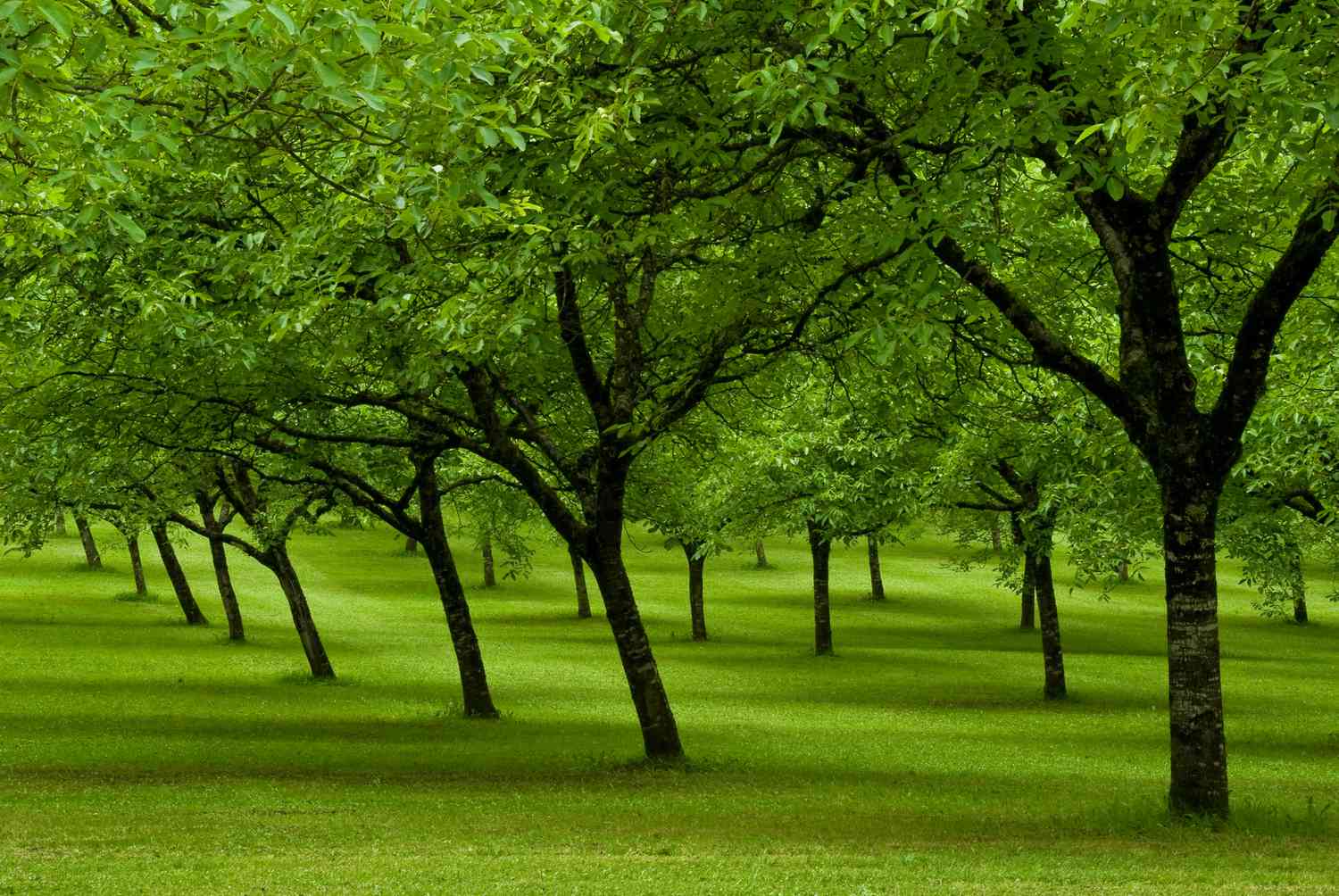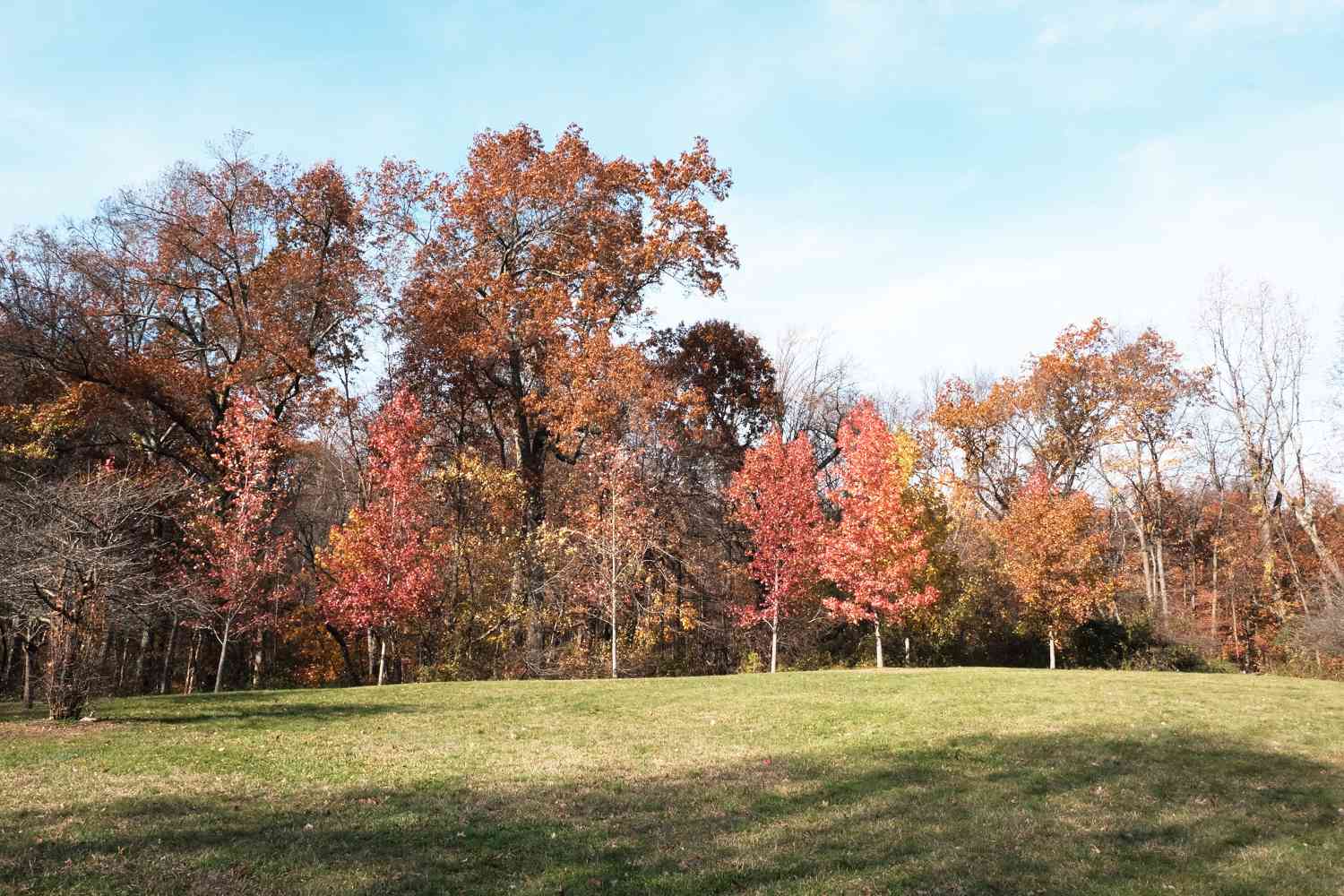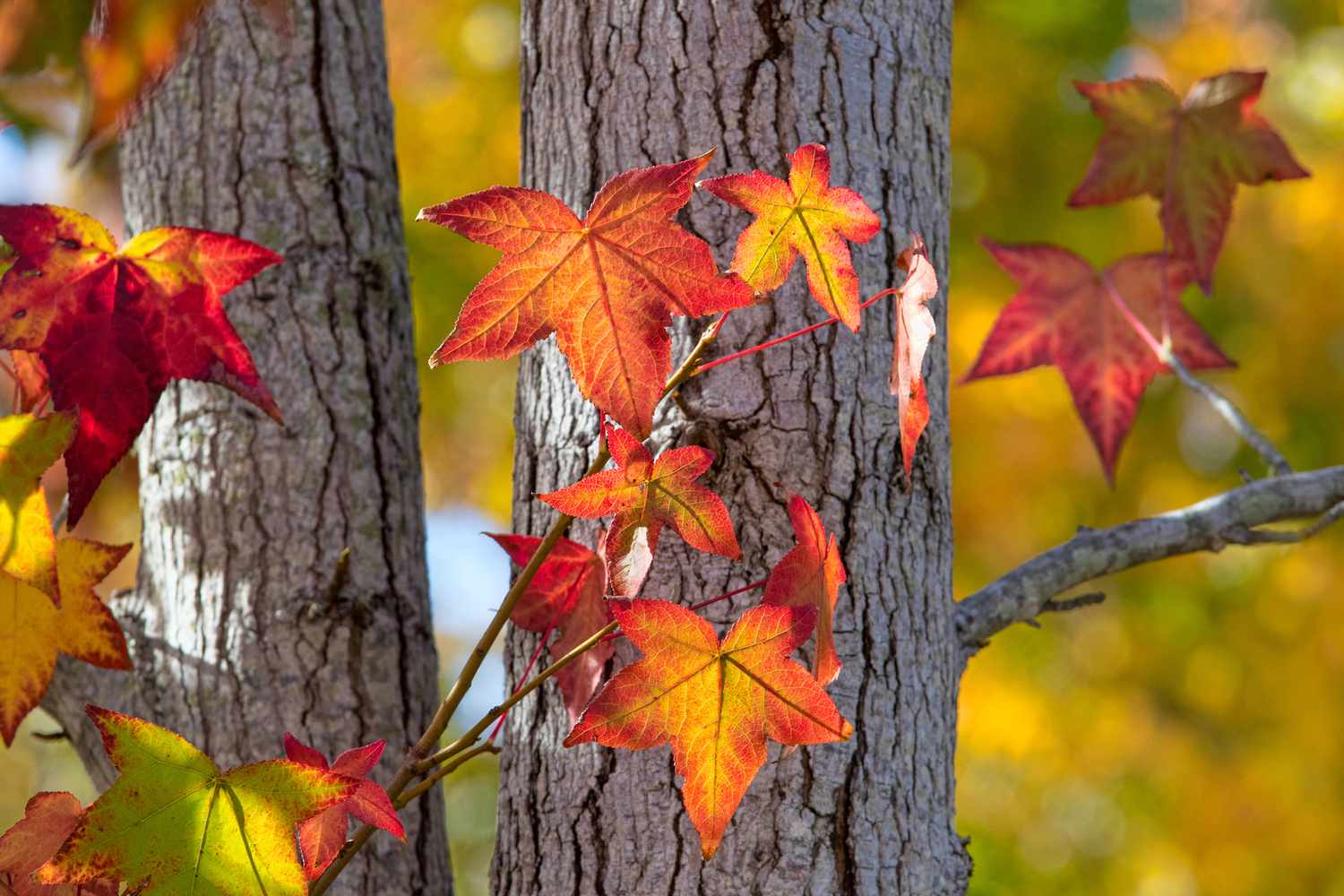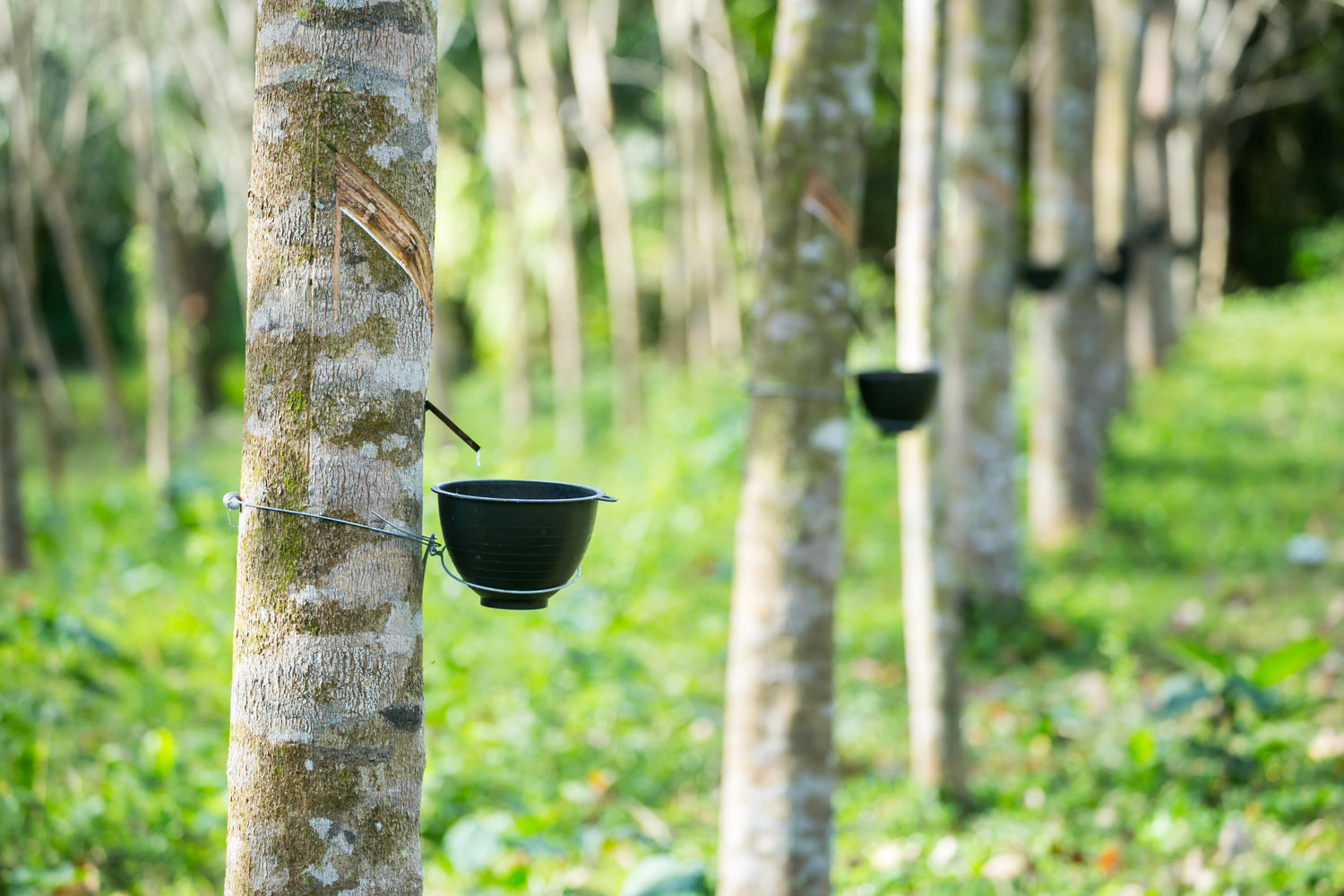Home>Gardening Techniques>Plant Care>What Are Trees Made Of
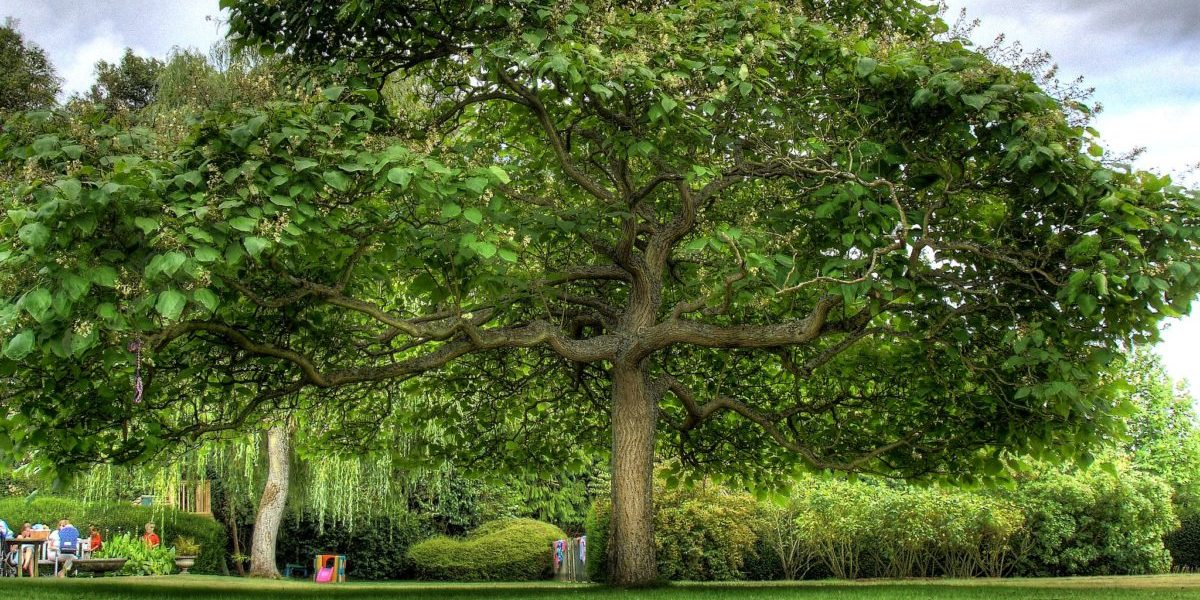

Plant Care
What Are Trees Made Of
Published: November 10, 2023
Learn about plant care and discover what trees are made of. Enhance your gardening knowledge and take care of your plants with our helpful tips and advice.
(Many of the links in this article redirect to a specific reviewed product. Your purchase of these products through affiliate links helps to generate commission for Chicagolandgardening.com, at no extra cost. Learn more)
Table of Contents
Introduction
Welcome to the fascinating world of trees and their composition. When we look at a towering tree standing tall in the midst of nature’s beauty, we may wonder what it is made of. Trees are not just a mass of leaves and branches; rather, they have a complex structure that gives them strength, durability, and the ability to grow.
Understanding the composition of trees is not only interesting but also important for various reasons. As plant enthusiasts, arborists, or even casual nature lovers, it is essential to have knowledge about the fundamental components that make up these magnificent organisms. This knowledge can help us appreciate their beauty and better care for them.
In this article, we will explore the different elements that make up trees, including cellulose, lignin, hemicellulose, extractives, and bark. Each of these components plays a crucial role in the structure and function of trees, providing strength, support, protection, and additional properties that allow them to thrive in diverse environments.
Whether you have a specific interest in plant care, gardening, or simply want to expand your knowledge, this article will provide you with valuable insights into the composition of trees. So, let’s dive in to discover what lies beneath the surface of these majestic plants.
The Composition of Trees
Trees are composed of several main elements that work together to provide strength, support, and protection. Understanding these components is essential for comprehending the biology and structure of trees.
The primary constituents of trees include:
- Cellulose: Cellulose is the most abundant organic compound on Earth and is a fundamental building block of trees. It forms the cell walls, providing rigidity and structure. Made up of long chains of glucose molecules, cellulose gives the tree its strength and stability.
- Lignin: Lignin is another vital component that provides rigidity and support to trees. It fills the spaces between cellulose fibers, acting as a glue that holds the cell walls together. Lignin is responsible for the woody texture of trees and provides resistance against pests, diseases, and environmental factors.
- Hemicellulose: Hemicellulose is a complex carbohydrate that surrounds cellulose fibers, acting as a supportive matrix. It contributes to the flexibility and elasticity of trees’ cell walls. Unlike cellulose, hemicellulose is more easily broken down by certain enzymes, making it an important energy source for decomposers.
- Extractives: Extractives are a diverse group of compounds found in various parts of trees, including the bark, leaves, and wood. These compounds serve various functions, ranging from protection against pathogens and insects to providing color and aroma. Some extractives have medicinal properties and are used in traditional medicine.
- Bark: Bark is the outermost layer of a tree and serves as a protective barrier. Composed of dead cells, it shields the delicate inner tissues from mechanical damage, extreme temperatures, and moisture loss. The thickness and texture of bark vary among different tree species.
Each of these components contributes to the overall structure and function of trees, making them resilient and adapted to their environments. The intricate combination of cellulose, lignin, hemicellulose, extractives, and bark allows trees to grow tall, withstand harsh weather conditions, and support the diverse ecosystem around them.
Now that we have a basic understanding of the composition of trees, let’s delve deeper into the role of each element and how they contribute to the remarkable features and characteristics of these magnificent plants.
Cellulose: The Building Block
Cellulose is the primary component of trees and serves as a crucial building block for their structure. It is a complex carbohydrate polymer made up of repeated glucose units, forming long chains that intertwine to create the cell walls.
The arrangement of cellulose molecules gives the tree its strength and rigidity. Cellulose fibers are incredibly strong, making them resistant to tension and providing structural support to the tree. This strength allows trees to grow tall and maintain their shape, even in the face of strong winds and external pressures.
Cellulose acts as an essential structural component in other parts of trees as well. It forms the primary component of the xylem, the tissue responsible for transporting water and nutrients from the roots to the rest of the tree. The xylem vessels are composed of elongated cells with thickened cellulose walls that ensure efficient water transport.
Moreover, cellulose contributes to the formation of the phloem, another plant tissue involved in the transportation of organic compounds, such as sugars, from the leaves to other parts of the tree. The sieve tubes that make up the phloem contain cellulose fibers that provide structural support to these specialized cells.
Cellulose is highly resistant to enzymatic breakdown, meaning that it provides long-lasting support to trees. However, certain organisms, such as termites and some bacteria, have the ability to digest and break down cellulose using specialized enzymes. This highlights the impressive adaptability and co-evolution between trees and the organisms that depend on them.
In addition to its structural role, cellulose also plays a crucial environmental role. Trees store vast amounts of carbon in their cellulose, contributing to the global carbon cycle and helping to mitigate climate change by reducing the concentration of atmospheric carbon dioxide.
Cellulose is an extraordinary compound that forms the foundation of trees. Its strong and rigid qualities provide structural support, allowing trees to grow tall and withstand external forces. Moreover, its role in nutrient and water transport and carbon sequestration makes it a vital component for the overall health and function of trees.
Lignin: The Strength Provider
Lignin is a complex polymer that plays a crucial role in providing strength and durability to trees. It is the second most abundant component in woody plants, after cellulose. While cellulose provides rigidity to the cell walls, lignin acts as a glue, binding the cellulose fibers together and providing resistance against mechanical stress.
Lignin fills the spaces between cellulose fibers, creating a strong and intricate network that gives trees their woody texture. It acts as a natural binder, making trees sturdy and enabling them to withstand the forces of nature, such as strong winds and heavy loads.
In addition to its mechanical support, lignin also contributes to the impermeability of cell walls. It makes the cell walls less permeable to water and other substances, preventing excessive water loss and ensuring the efficient movement of water and nutrients throughout the tree.
Another important function of lignin is its role in defense mechanisms. It acts as a barrier against pathogens, insects, and other harmful organisms. The presence of lignin in the cell walls makes trees less susceptible to disease and decay, protecting their vital tissues from invasion and damage.
Interestingly, lignin is responsible for the color and aroma of certain wood types. The diverse range of colors in different tree species, such as the deep red of cedar or the golden hue of teak, can be attributed to the unique composition and arrangement of lignin in the wood.
While lignin provides strength and protection, it also presents challenges. Its rigid structure makes it difficult to break down during the process of mechanical pulping, which is used in the paper-making industry. However, advances in technology and methods have allowed for more efficient removal of lignin, making it possible to produce high-quality paper.
Overall, lignin is a fascinating component that gives trees their resilience and structural integrity. Its ability to bind cellulose fibers together, protect against pathogens, and contribute to the impermeability of cell walls are just a few of the valuable functions it serves. Without lignin, trees would lack the strength and durability needed to thrive in their environments.
Hemicellulose: The Supporting Element
Hemicellulose is a complex carbohydrate that plays a crucial role in the structure and function of trees. It is a diverse group of polysaccharides that surrounds cellulose fibers and provides support and flexibility to the cell walls.
Unlike cellulose, which forms rigid and strong fibers, hemicellulose has a more branched and amorphous structure. This arrangement allows hemicellulose to interact with cellulose fibers and create a supportive matrix within the cell walls.
Hemicellulose acts as a glue between the cellulose fibers, contributing to the overall strength and stability of the cell walls. It enhances the mechanical properties of the cell walls, allowing trees to withstand bending and twisting forces without breaking.
One notable characteristic of hemicellulose is its ability to bind and retain water molecules. This property makes hemicellulose important for water regulation within the tree. It helps to maintain the correct moisture content in the cell walls, preventing excessive drying or swelling due to environmental changes.
Moreover, hemicellulose is more easily broken down by certain enzymes compared to cellulose. This makes it an important energy source for decomposers, such as fungi and bacteria, in the process of decay. As hemicellulose is broken down, it releases sugars that can be utilized by microorganisms, contributing to the recycling of nutrients in ecosystems.
In addition to its structural and regulatory functions, hemicellulose also plays a role in the transportation of water and nutrients within the tree. It creates pathways and channels that facilitate the movement of fluid within the cell walls, aiding in the delivery of essential resources to different parts of the tree.
Overall, hemicellulose acts as a supporting element in trees, providing flexibility and strength to the cell walls. Its ability to bind cellulose fibers, regulate water content, and serve as an energy source highlights its importance in the structure and function of trees.
Extractives: The Additional Components
Extractives are a diverse group of compounds found in various parts of trees, including the bark, leaves, and wood. These compounds serve various functions and contribute to the unique properties of different tree species.
One important class of extractives is terpenoids, which are responsible for the distinct aromas often associated with trees. Terpenoids can range from the familiar scent of pine trees to the sweet fragrance of flowers. These compounds not only provide pleasant smells but also play roles in defense against herbivores, as some terpenoids have deterrent or toxic effects.
Phenolics are another class of extractives that have protective properties. These compounds, including tannins and lignans, can act as antioxidants, inhibiting the damage caused by free radicals. Phenolics also contribute to the coloration of some trees, such as the vibrant red or yellow leaves in the fall.
Flavonoids, a type of phenolic compound, are known for their diverse functions. They can act as pigments, producing colors in flowers and fruits to attract pollinators or aid in seed dispersion. Some flavonoids have antimicrobial properties and can help protect trees from pathogens.
Alkaloids are another group of extractives found in certain tree species. Alkaloids can have various effects on organisms, such as acting as toxins or actively deterring herbivores. They can also have medicinal properties and are sometimes used in traditional medicine.
Furthermore, resins and gums are extractives that play a protective role in trees. These substances are produced in response to injury or stress and act as sealing agents, protecting the injured areas from pathogens and moisture loss. Resins also contain compounds that can have antimicrobial properties.
Overall, extractives contribute to the unique characteristics and functions of different tree species. They provide protection against pests, pathogens, and environmental stressors, as well as contributing to the striking visual and aromatic qualities we associate with trees.
Bark: The Protective Layer
Bark is the outermost layer of a tree and serves as a protective barrier between the tree’s inner tissues and the external environment. Made up of several layers, bark plays an essential role in providing protection against mechanical damage, extreme temperatures, and pathogen invasion.
The outermost layer of bark, known as the cork layer or periderm, is composed of dead cells that are densely packed with a substance called suberin. Suberin provides a waterproof and airtight barrier, preventing excessive water loss and protecting the tree from dehydration.
Underneath the cork layer is the phloem, a tissue responsible for the transportation of sugars and other organic compounds from the leaves to other parts of the tree. The phloem consists of specialized cells called sieve elements that are arranged in tubelike structures known as sieve tubes. These cells are protected and supported by the bark.
Next, we find the phloem cambium, a layer of active cells that continuously divide and produce new phloem cells. This layer is pivotal for the growth and development of the tree. The phloem cambium is responsible for the increase in girth of the tree as new phloem cells are added.
Finally, the innermost layer of bark is the xylem, which is responsible for the transport of water and minerals from the roots to the rest of the tree. The xylem vessels are composed of elongated cells with thickened cell walls that provide strength and support.
Bark has many protective functions. It shields the sensitive inner tissues of the tree from physical damage, such as from animal bites or mechanical injuries. It also acts as an insulator, protecting the tree from extreme temperatures, both hot and cold, and reducing the risk of tissue damage.
Bark is also involved in defense mechanisms. Some tree species produce chemical compounds, such as tannins and resins, within the bark that have antimicrobial properties, deterring potential pathogens from entering the tree’s interior.
Furthermore, the appearance of bark can vary greatly among different tree species. Some trees have smooth bark, while others exhibit rough and textured surfaces. The patterns, colors, and textures of bark make each tree unique and, in some cases, serve as a means of identification.
Overall, bark plays a critical role in protecting the tree, supporting its growth, and serving as a defense mechanism. Understanding the structure and importance of bark helps us appreciate the significance of this outer layer in the life of a tree.
Conclusion
Understanding the composition of trees provides valuable insights into their structure, function, and resilience. Trees are made up of several key components that work together to provide strength, support, and protection.
Cellulose serves as the building block of trees, forming rigid and strong cell walls that give trees their stability and enable them to grow tall. Lignin acts as a glue, binding the cellulose fibers together and providing additional strength and durability. Hemicellulose provides flexibility and support to the cell walls, contributing to the overall stability of the tree.
Extractives are diverse compounds found in various parts of trees and serve different functions, such as defense against pathogens, providing color and aroma, and aiding in nutrient recycling in ecosystems. Bark, the outermost layer of a tree, acts as a protective barrier, shielding the inner tissues from mechanical damage, extreme temperatures, and moisture loss.
Together, these components create the remarkable structure of trees, allowing them to thrive in diverse environments and support the ecosystems in which they exist. Understanding their composition provides us with a deeper appreciation for the resilience and adaptability of trees.
Whether you are a plant enthusiast, arborist, or simply curious about the natural world, delving into the composition of trees offers a fascinating journey. It brings us closer to the awe-inspiring complexity of these living organisms and highlights the importance of their conservation and care.
So, next time you marvel at a towering tree, take a moment to consider the intricate combination of cellulose, lignin, hemicellulose, extractives, and bark that make up its structure. Trees are not just inert objects. They are living entities intricately constructed with various components, each playing a vital role in their existence.




